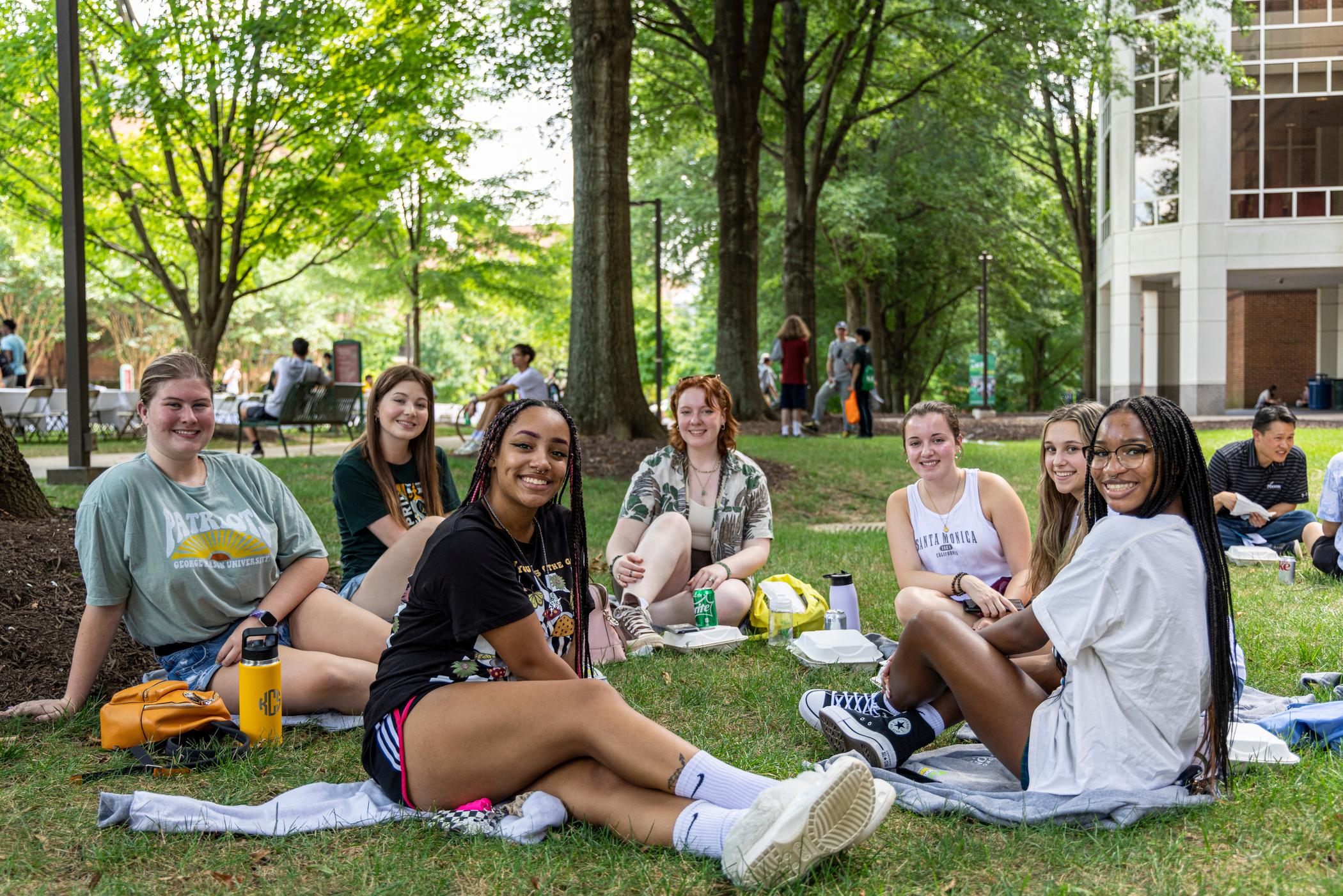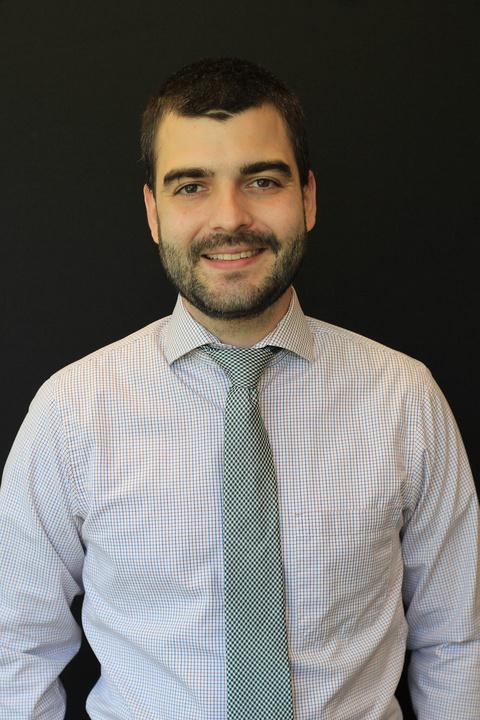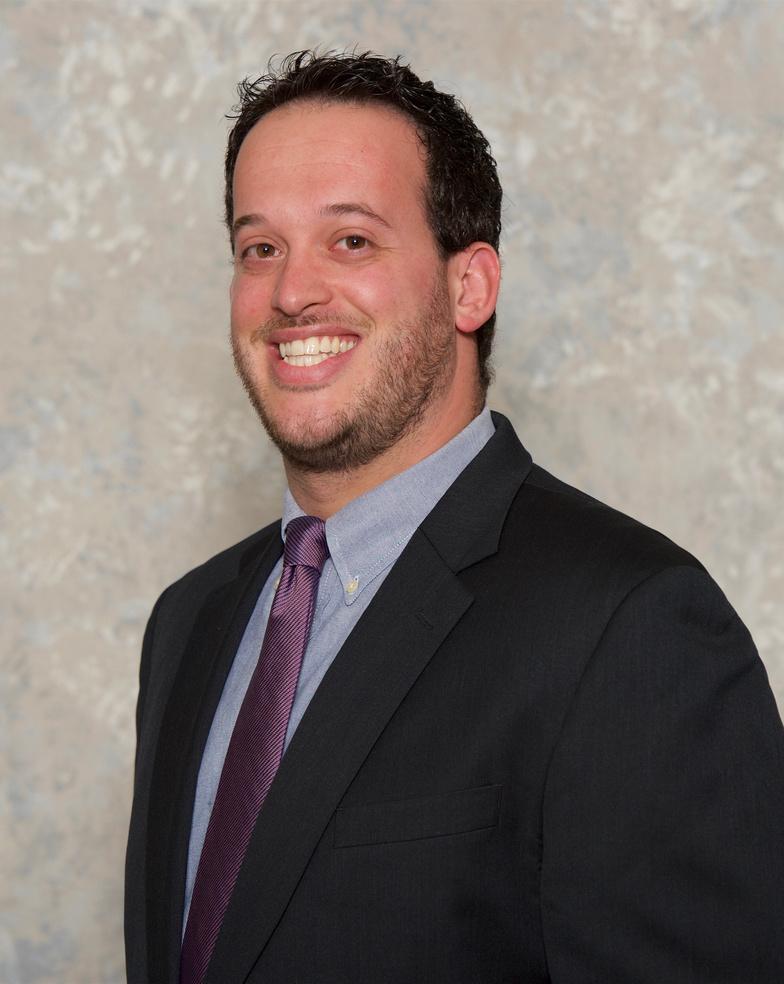

GRADUATE STUDENT ONBOARDING The Faculty & Staff Guide
2 Faculty & Staff Guide to Graduate Student Onboarding
What do we mean by onboarding and why is it important? Onboarding Plan for CEHD Graduate Students
Learning Outcomes of Graduate Student Onboarding Graduate Prelude Program Onboarding
The Student and Academic Affairs Team is here to help! Timeline Curriculum 8 9
Suggested Topics Ways to Foster Belonging for New Students Choosing an Onboarding Format 10 11 12
C O N T E N
TS
5 6 7 8 10 13
COLLEGE OF EDUCATION AND HUMAN DEVELOPMENT
Sheehy, B. (2016, December). Graduate student success: A model that works. Academic Advising Today, 39(4).

“The research is clear that when students are initially immersed into a department’s academic and social community, they are much more likely to succeed than if they are left to navigate graduate school alone.”
4 Faculty & Staff Guide to Graduate Student Onboarding
WHAT DO WE MEAN BY ONBOARDING AND WHY IS IT IMPORTANT?
First impressions matter.
As a university and a college, we expend considerable resources in marketing our programs and nurturing prospective students throughout the application and decision process Once a newly accepted graduate student declares their intent to enroll, the challenge of retaining that student and ensuring successful degree completion begins. The foundation that is laid before the first day of classes and which continues into the first semester is crucial to helping students persist and thrive to graduation.
We prefer the term onboarding rather than orientation because the traditional undergraduate orientation experience should be considered a mismatch for graduate students.
It is important that graduate students feel the differences inherent in the graduate school experience from the outset so they can better adjust to the increased rigor and opportunity that an advanced degree program entails. Onboarding introduces students to campus life, resources, and policies, much like an orientation, but it also sets expectations for professional interaction within a student’s academic discipline; reduces “imposter syndrome”; seeks to create a sense of belonging based on a community of shared scholarship; and promotes greater student agency and self reliance.
A truly robust College of Education and Human Development (CEHD) onboarding experience is the product of the combined efforts of the CEHD Office of Student and Academic Affairs, each graduate program, and our university partners.
Only by working together through an ongoing series of initiatives, can we ensure a seamless transition from acceptance letter to confident first semester graduate student This guide details the steps that the CEHD Office of Student and Academic Affairs employs to familiarize new students with university and college policies, procedures, resources, and expectations. It also offers guidance for how academic programs and advisors can best introduce students to their new program. Together, we can ensure that every CEHD student has the tools they need to succeed.
COLLEGE OF EDUCATION AND HUMAN DEVELOPMENT
Onboarding Plan
FOR NEWLY ADMITTED CEHD GRADUATE STUDENTS
01. ADMISSION WELCOME
The onboarding experience begins by making new students aware of their upcoming Graduate Prelude session and program level onboarding initiatives within their acceptance materials, ensuring a smooth hand-off between CEHD Admissions, Student and Academic Affairs, and the program. Knowing “what’s next” reduces anxiety for new students.
02. GRADUATE PRELUDE
Graduate Prelude is a virtual onboarding event offered by the CEHD Office of Student and Academic Affairs via the Blackboard learning platform. All new students are enrolled about a month before their first day of classes and complete 10+ modules covering a variety of topics essential to student success. Graduate Prelude arms students with practical information they will need throughout their Mason career. Learn more about Graduate Prelude on pages 8 9.
03. PROGRAM ONBOARDING
In the past, many programs held a welcome/information session in conjunction with an in person Graduate Prelude event. Going forward, we encourage every program to host its own onboarding session after CEHD students have completed the now virtual Graduate Prelude event. See pages 10 13 for program onboarding recommendations.
04. CONTINUED EDUCATION
Throughout their first semester and beyond, new students will be offered opportunities to participate in virtual and in person welcome, wellness, and academic success events intended to deepen their sense of belonging and reduce barriers to success.
6
Faculty & Staff Guide to Graduate Student Onboarding
Learning Outcomes
OF GRADUATE STUDENT ONBOARDING
After participating in CEHD Graduate Prelude and their program level onboarding initiative, students will:
Know key college personnel and college and university resources to turn to for problem solving and support
Know their program personnel, including their academic advisor
Understand requirements for degree completion within their program of study
Have a basic understanding of graduate policies and procedures, particularly those that tend to pose the greatest barriers to student success
Understand CEHD and university graduate student expectations regarding academic integrity, professional disposition, required communication channels, and appropriate appeal/grievance procedures
Have a greater connection with peers, particularly those within their program
Begin to feel a sense of belonging within CEHD and an affinity for their program
Feel more confdent in their ability to succeed as a CEHD graduate student
COLLEGE OF EDUCATION AND HUMAN DEVELOPMENT
Graduate Prelude
In 2017, the CEHD Office of Student and Academic Affairs (SAA) began hosting a first of its kind orientation program for newly admitted CEHD graduate students called Graduate Prelude These in person sessions were held in spring and fall on the Fairfax campus and usually reached up to 200 students With the onset of the COVID 19 pandemic, Graduate Prelude was re envisioned as an asynchronous Blackboard course. The virtual version of Graduate Prelude was a tremendous success, reaching over 700 new students in its first semester and receiving very positive feedback from participants. Because the virtual version of Graduate Prelude enables SAA to reach a much wider audience with successful outcomes, it has been decided that all future Graduate Prelude sessions will continue in the virtual format.
8 Faculty & Staff Guide to Graduate Student Onboarding
Timeline Student start semester: Fall Spring Summer Graduate Prelude Course is available in Blackboard: August 1 14 January 1 14 April 1 14 Graduate Prelude invitations and reminders to students begin to be sent by SAA: Mid July Early December Mid March Programs are encouraged to host an onboarding session in conjunction with Graduate Prelude: August 14 first day of classes January 14 first day of classes April 14 first day of classes Programs should notify SAA of their onboarding plan and onboarding point(s) of contact no later than*: July 1 December 1 March 1 * This allows SAA adequate time to update websites and include program specific information in our messages to students.
Curriculum
The
CEHD
CEHD
Mason
Academic
Mason
Successful

COLLEGE OF EDUCATION AND HUMAN DEVELOPMENT
following topics are covered within the Graduate Prelude course:
structure
Core Values
& CEHD jargon
expectations Academic integrity
policy (crash course) CEHD communication policy Essential graduate student communication skills
communication with faculty and staff Financial wellness Graduate student funding sources Coping with a financial emergency Special populations: International students, B/AM students Technology requirements Technology setup and support Health & Wellness Professionalism/Professional dispositions Networking as a graduate student Mason community and culture Graduate student life Virtual campus tour COVID 19 protocols
Program Onboarding
New students frequently tell us how eager they are to meet the faculty, staff, and peers within their new graduate program Having a chance to do that, even to a small extent, prior to the beginning of their first semester greatly reduces students’ anxiety, offers a sense of belonging, helps to reinforce their decision to enroll, and prevents melt. For these reasons, we hope every graduate program will offer some type of onboarding experience tailored to their new students.
Suggested Topics
Introduction to your program leadership, faculty, and staff
Program format and structure (e.g., cohort model, program of study, course delivery format)
STAY CONNECTED WITH YOUR NEW STUDENTS!
New students will have questions! Be sure they know the best contact information and preferred communication methods for your program. It’s also a good idea to set expectations for reasonable response times
Program specific expectations and policies
Community building: welcoming students and helping them build connections with each other and your program
In the past, some students who attended fall Graduate Prelude reported frustration with the inability to reach their faculty advisor or a lack of a response to their questions during the summer before they began their program. If your faculty advisors will be unavailable for any reason, please designate and communicate an alternative program representative who can assist during this anxiety provoking time for new students!
10 Faculty & Staff Guide to Graduate Student Onboarding
Ways to Foster Belonging for New Students
Try the following strategies to build community during your program onboarding:
DISARM
Use your onboarding session to humanize yourself and the program Consider telling students about your interests and identities inside and outside of the classroom/work. This will help put students at ease. Ask students to introduce themselves using the same format, and take an interest in their responses.
ENGAGE
Make your onboarding session as interactive as possible Pause often for questions, call on students by name, and aim for a conversation, not a lecture.
BREAKOUT GROUPS
Consider using breakout groups (separated purposefully or at random) to facilitate more engagement among students Assign a clear task for the breakout to give students direction Here are some examples:
Give students a topic to discuss in their breakout, such as, “What do you expect will be your biggest challenge in grad school?” Then, when everyone returns to the main room, ask each breakout group to report out Unpack their answers and direct them to appropriate university resources to alleviate their worries.
Give students a Mason/program specific “quiz” for their breakout and let them work together to complete it. The first group to report back with all the right answers wins bragging rights. This is a great way to make sure students absorbed the information from their onboarding session If all of the groups answer the same question incorrectly, you may want to elaborate on that question.
INCLUDE PEER MENTORS/STUDENT LEADERS
Incoming students love to learn from students further along in the program. Consider inviting a student leader to your onboarding session so that they can answer questions faculty/staff can’t (i e , where’s the best place to study in the library?). You may even want to ask the student leaders to facilitate the breakout groups.
SWAG
Welcome students with some program specific swag so they can start building their affinity with the program It's good advertising, too!
FURTHER CONNECTIONS
Invite students to an upcoming program/college event; encourage them to follow/share your program's social media accounts; allow time for them to trade email addresses or set up a cohort GroupMe chat
COLLEGE OF EDUCATION AND HUMAN DEVELOPMENT
Choosing an Onboarding Format
CEHD graduate programs take many forms. When choosing the best way to deliver your program’s onboarding content to new students, it’s important to tailor your initiative to the needs of your students, faculty, and staff. The best designed event is wasted if students don’t participate! Here are some suggestions abou
VIRTUAL EVENT: A virtual meeting who may not be a event due to their commitments.

Recommende allows for bre which is great of their new p granted a bas
IN PERSON EVENT:
If the majority of your students live in the area and will be taking in person classes, you can consider hosting your session in person. Don’t host it too early, as many students may be out of town until just before the semester starts Please keep in mind the following as you plan your in person event:
Parking: Students may not have a parking pass yet. You will need to work with Parking Services to see what temporary parking options exist for your students and communicate that information out. Covid 19 safety protocols: All in person events will have to follow ever changing COVID safety protocols. You will receive guidance on this when you book your event in 25Live, but that guidance may change by the time you host your event. Be prepared to pivot!

12 Faculty & Staff Guide to Graduate Student Onboarding
SPECIAL CIRCUMSTANCES:

While a virtual or in person live onboarding event is the best way to build community and give students a chance to ask questions about key policy and expectations, some programs may have just 1 2 new students to welcome, or lack the personnel to put on a large event, and others may find it challenging to find a time that works for students scattered around the globe. In that case, we urge you to be creative. An informal phone call, a personalized program welcome/information letter with a follow up email asking for questions, or an asynchronous welcome video from faculty and staff can do wonders to engage new students and draw attention to what you need them to know! It’s all about setting the right expectations and tone for future success.


THE STUDENT AND ACADEMIC AFFAIRS TEAM IS HERE TO HELP!
While we can’t plan and execute your program’s new student onboarding session for you, the CEHD Student and Academic Affairs Team is here to help Feel free to turn to us for more tips or to ask questions as you plan your onboarding initiative.



The Student and Academic Affairs Team is grateful for your support of CEHD’s high impact retention practice of graduate student onboarding and for making student success a top priority.




COLLEGE OF EDUCATION AND HUMAN DEVELOPMENT
MS: 4B4 | Email: cehdsaa@gmu.edu
Phone: 703 993 2080 Fax: 703 993 2082

College of Education and Human Development Office of Student and Academic Affairs 2300 Thompson Hall Fairfax Campus
